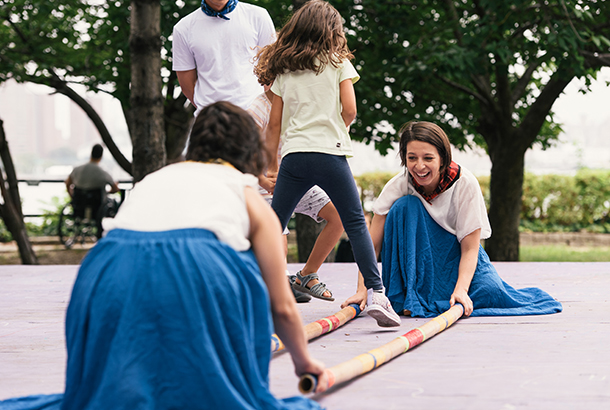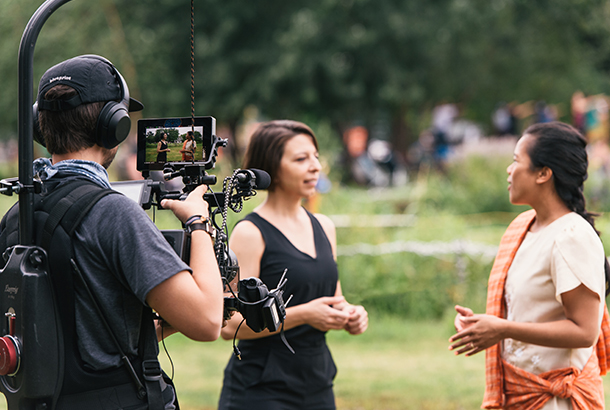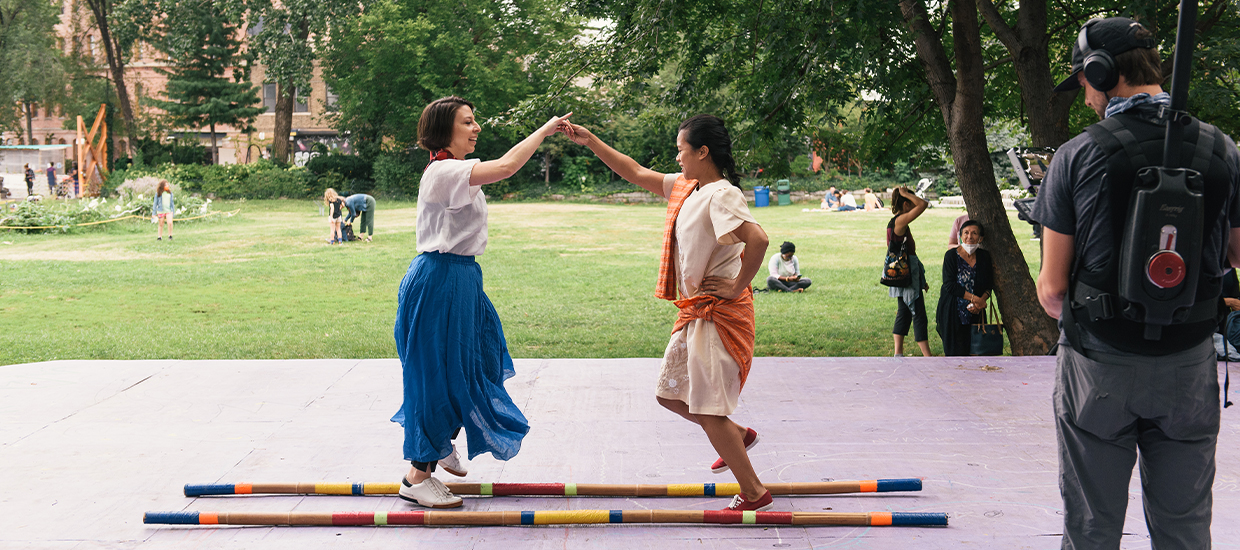The fifth season of the PBS series airs this month
It’s one of those perfect late-summer Sundays, when the stale mugginess of New York City’s August begins to give way to the cool of autumn, and Queens’s Socrates Sculpture Park is buzzing with activity. As riders in the annual NYC Five Boro Bike Tour zip past a hula class, Mickela Mallozzi and her crew wait for the dancers to clear the stage so they can begin filming.
A hula group isn’t the biggest obstacle the TV host and producer has faced in creating her PBS series, Bare Feet with Mickela Mallozzi, the fifth season of which airs this month. The idea for the show came to her in 2010, when the New York University graduate, burned out from her music industry career, woke up in the middle of the night and decided to travel the world and learn as many dances as possible. “My friends told me I was crazy,” she says with a laugh. Mallozzi had no experience in television or production when she started the show, and she was repeatedly told she did not have the right “look” to be a host.

Mallozzi understood, however, that traveling and learning the dances of other cultures would allow her to make meaningful connections around the globe. “I can have a whole conversation without any translator,” she explains. “It’s all body language, rhythm, dance.” In the first four seasons of Bare Feet, she crossed five continents, uncovering traditions from places such as Italy, South Korea, Morocco, Uzbekistan, and the American South—and picking up four Emmy Awards along the way.
The latest season was conceived during the pandemic, when travel was far more challenging, so Mallozzi decided to introduce audiences to the global expanse of cultures contained within New York’s five boroughs. At today’s shoot, for example, Karesia Batan, a professional dancer and founder of the Queensboro Dance Festival, is teaching Mallozzi tinikling—a playful folk dance from the Philippines that seems to combine jump rope and hopscotch, with dancers weaving in between two colorful bamboo poles. According to Batan, Filipino families often dance tinikling on Thanksgiving, after feasting on Filipino food.

Following a quick tutorial, Mallozzi appears fairly fluent in the basic steps—“picking up dance moves quickly is my special skill,” she says—but the lesson soon devolves into giggles as Batan throws out additional challenges: increasing speed, adding directional changes, holding hands with a partner. A group of observers, including families and Bare Feet fans, gathers around the stage, and Batan invites them to learn a few steps. This interactive component demonstrates how dance has the power to bring communities together, and it has become essential to the show. “Once the dancing begins, I start grabbing people from the audience,” says Mallozzi, who admits that sometimes she tries to make her own moves look less polished, so others feel encouraged to join in. “People just want permission to try.”
By giving people that permission, Mallozzi hopes she and her show can perpetuate an increased acceptance of other cultures. “We’re trying to break down these barriers and show that we are all the same,” she says. “We need the same things: food, shelter, love, and a little bit of dance and music.”
